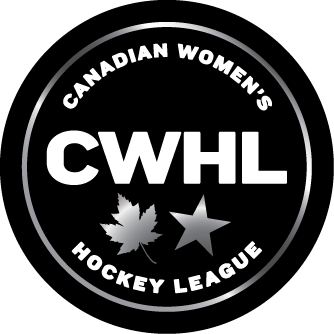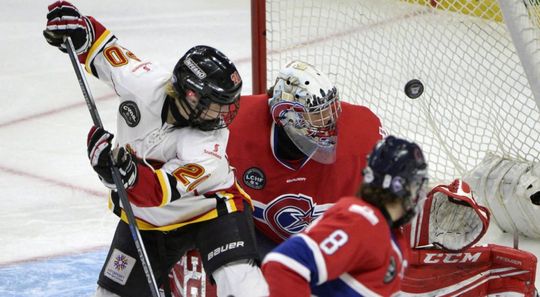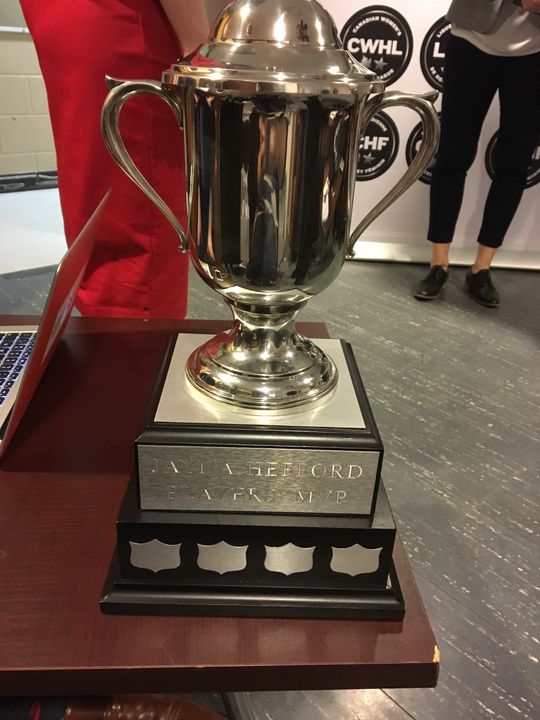Earlier this summer, the Canadian Women's Hockey League announced an expansion to China, of all places, in a partnership with KHL-based Kunlun Red Star to place a women's team in Shenzhen. The team will branch into two brackets -- a professional level and its under-18 counterpart -- and act as a sort of developmental program for national team hopefuls in advance of the 2022 Winter Olympics in Beijing, according to its official website. Moreover, according to multiple reports, the CWHL is angling for greater appeal to sponsors who see the expansion as an opportunity to reach global markets.
How did the CWHL announce this overseas expansion? Well, most people who follow the league closely already knew, because of rumors and reports from The Ice Garden, who picked up the story from international media. They called a press conference, promising big news. Most people found out on Twitter.
Many of the CWHL players were kept in the dark until seeing the news pop up on their social media timelines after weeks of rumors, and the news also came ahead of any promise to pay its players in North America -- something that commissioner Brenda Andress has been talking about for almost as long as the league has existed. The league even tweeted, then deleted, news of another team (allegedly called the Vanke Rays, according to a podcast hosted by Joe Pack and featuring The Ice Garden's managing editor, Hannah Bevis, and a tweet showing the ice surface). The second team has, as of publication, not been formally confirmed by the league at all.
The CWHL's communications manager, Sasky Stewart, left the league for a job with the Toronto Maple Leafs after this season. Since her departure, press releases have been at a minimum and media requests and inquiries from many reporters have gone ignored since at least late June. With a move like this, that's questionable at best and highly unprofessional at worst -- and from a league that has been looking to set itself apart from its U.S.-based counterpart, the National Women's Hockey League, for the past two seasons. When you're an institution looking for support in order to grow, media relations can become one of the biggest tools, if not your biggest tool for that -- and I'm not overstating that just because I am (in one way or another) part of the hockey media. How else do you get the word out? Certainly not through sketchy moves like this, which can alienate not just the media, or fans, or even players, but also the advertisers and investors whom you are trying to woo.
The CWHL and NWHL each have dedicated reporters, mostly of the online media variety, who have sizable followings on social media; however, it's the mainstream outlets that get breaking news, while bloggers and online reporters have to come up with new and informed angles to fill in the holes that are left by the bigger outlets. Each league often seems to be casting a wide net, rather than fostering relationships that lead to solid, consistent web coverage and a strong social media platform. After the launch of the NWHL, it looked as though the CW was stepping up its game, and that was largely thanks to Stewart's efforts; this seemed to prove that competition would serve to strengthen both leagues. Now, each have fallen back.
In fact, this entire expansion looks to be a move to permanently set the CWHL ahead of the NWHL after being blindsided by the news of a competing league back in 2015. Ever since the NWHL came to be, with its promise of paying players from Day One, relations between the two leagues has been coldly polite and have bordered on something worse. The American league, headed by Dani Rylan, was idealistic from the jump, but is now facing uncertainty heading into its third season without any actual salary announcements or plans for the future. Meanwhile, its Canadian counterpart is on the verge of paying its players and has begun a structure to support that incentive, though I'm not sure where it stands right now.
But such expansion is a bold and even reckless move from a league that had used the past 10 seasons to build its legacy on patience, grassroots work, and a framework that promised fair and sustained pay once it came. Now, we're going from that to allowing players who come over from North America to be paid allegedly four to five times the highest salary allotted in the NWHL to "advise" Chinese nationals on the ins and outs of hockey, while also playing. Meanwhile, over 100 players in North America are still waiting for clarification on the paychecks they were promised years ago.
It's not just the sudden decision to expand overseas (rather than, say, south of their border) that alarms me. The KHL is a financially unstable organization that is owned by most of the energy industry in Russia -- which means that it's dependent on things like the price of oil. Most teams can only make enough money to cover a tenth of their operating costs , so these state-owned corporations cover the rest. If the price of oil is high, things are good...but if the price drops, teams could fold or get pushed out of the league. Regional governments strapped for cash have already been criticized by Russia's Minister of Finance, Anton Siluanov , as being "irresponsible" for spending money on sports teams. Also, as evidenced in the first article linked above, the dealings of KHL owners when it comes to its players aren't exactly listed under "best practices."
Though KRS is based in China rather than Russia, the funding model remains the same. The major KRS investors are based in the Chinese energy industry, as well as in real estate and banking. If a disaster were to happen, in our globalized economy it's hard to say that China wouldn't be just as affected -- and where does that leave both the men's and women's KRS teams, and their players from either side of the globe, if it does?
It's easy to assume that the CWHL could just focus once more on North American hockey and act like its expansion never happened. It's also not exactly realistic for them to do so. There is a lot hinging on this move, and if it doesn't work, it could spell trouble. This is the first time we've seen the league truly open itself up to capitalist interests, beyond its existing sponsorships with Tim Hortons and other Canadian corporations, and those were initially based in men's hockey at that. Is this something the CWHL may look back with regret on, should something go wrong? Of course, we'll never know until it happens, but for the league to make this kind of move now after 10 years of slow and steady growth is both intriguing and concerning.
I'd venture to say that the NWHL's presence has a lot to do with this. Once again, relations between the two leagues haven't been the most friendly; an antagonism that dates back to 2015, when the NWHL essentially lured away every U.S. National player from the Boston Blades to its own Beantown counterpart, the Pride. While the NWHL gathered a lot of positive press in its first season, it has struggled to replicate that PR success as of late. The upcoming third season could be a make-or-break for them -- and I think the CWHL knows this. It's already been slowly luring players back, with Kelli Stack jumping ship for Kunlun Red Star along with Finnish national Noora Räty. Zoe Hickel, Shiann Darkangelo, Emily Janiga, Alex Carpenter, Brooke Webster, and Lyudmila Belyakova have all registered for the CWHL Draft, and I'd assume that a good number of them are aiming their sights at playing in Shenzhen. With National Team centralization happening this season, as well in preparation for the 2018 Olympics in Pyeongchang, losing a steady stream of their biggest names could hurt the NWHL beyond repair.
It's worth noting that a lot of the players in the Canadian league said that ahead of the 2016 Clarkson Cup, when it looked as though the NWHL would try expanding to Toronto and Montreal, that there could only be one women's hockey league. Shortly after that, the CWHL filed a challenge with the Canadian Intellectual Property Office on the rights to the trademark "NWHL" in Canada. That challenge was joined by the Ontario Women's Hockey Association, the governing body that once presided over the former NWHL (which in turn lay the groundwork for the current CWHL). With that in mind, I'm not sure if they would mind the death of the NWHL before it had a chance to really get situated.
Nonetheless, getting involved with the KHL also puts the CWHL at risk. There's nothing in any article I've read on this topic to suggest that KRS has the CWHL's interests at heart, though the CWHL is not completely innocent here. There's an undertone of colonialism to the idea of even bringing North American players over to an Asian country to begin with, regardless of if those players have a better grasp on the sport to begin with. It didn't begin here, and I'm sure it didn't even begin when the men's Kunlun Red Star team was put together (with 18 North American, Finnish, and Russian players and just a handful of Chinese nationals who see limited ice time). Still, I get wary of a venture that puts the faces of the white American and European players front and center during its press conference, while the only Chinese people in the room are the male investors.
This is a move that's supposed to strengthen China's national team and popularize hockey in China; with that comes marketing, and putting faces to the names of the Chinese women who could potentially get involved with this team is a huge part of that -- especially when any Chinese national players who get involved are also making a huge sacrifice by relocating from up north near Beijing all the way to the southern coast, where Shenzhen lies (it's just next to Hong Kong). KRS should be looking to elevate the names of those players, and it could do that while still acknowledging that there are "advisers to the game" in players like Räty and Stack. Without that, it just looks as though the native players involved with this venture are bound to play second fiddle from the get-go, despite China's stated goal to improve their own team before the Olympics. I understand the prospect of making this look lucrative to sponsors and fans stateside as well, but if that's all you're focused on, then you're using China as a convenient backdrop to further your own cause, and that's rooted in colonialist ideals.
Overall, I'm not sure what we can really take from an expansion like this, except about a truckload of salt and an abundance of caution. I want this to work out, solely from the viewpoint of not wanting both the CWHL and the NWHL to go down in flames this season. I also don't think "working it out" should involve businessmen in a shaky industry, who are exercising a lot of power very quickly. Bold moves are historical ones. And sometimes, history repeats itself in the worst ways possible.
After a month, still more questions than answers re expansion incl. on league fairness and player stipend amounts. Excited to know more soon
— CWHLPA (@CWHL_PA) July 25, 2017
Moreover, the announcement of a move like this takes much more nuance and professionalism than a tweet with little to no notice to players or to the media who have been consistently covering games for years now. With expansion of the league itself should come rebuilding and expansion of its public and media relations, because a step back from PR while the CWHL attempts to move forward can spell trouble. There’s a lot here that the league needs to clean up and work on if they truly want to build both players and dreams.
This is a pivotal moment for women’s hockey -- although it seems like every development in the sport these days is a “pivotal moment for women’s hockey.” Just in the last few years, we’ve seen the NWHL launch, the Outdoor Women’s Classic, and the USA Hockey labor action, to name just a few examples. The coverage of these stories by the media and the overall levels of transparency from both leagues has varied wildly in quality and effectiveness. A message getting out without an attached controversy is more the exception than the rule. Everyone who wants the sport to succeed will be have a reason to be concerned if this next venture turns out not to be a runaway hit.







